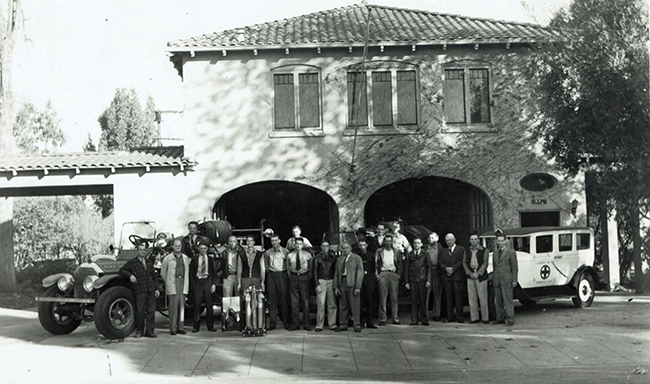City needs more time to update Claremont’s housing element
Tuesday night’s city council meeting was proof that citizen-driven policy has power in the city of Claremont.
After nearly three hours of discussion between council members, Claremont residents and city staff, the Claremont council decided to restart the process of updating the housing element of the city’s general plan, despite repercussions of missing the mandated February 15 state deadline. The decision was made in order to more adequately involve Claremont citizens in the process after complaints.
The general plan’s housing element update, required by law, is needed to identify undeveloped land in the city of Claremont that might be viable to meet the area’s housing needs through 2021, according to Brian Desatnik, director of community development. Enacted in 1969, the housing element requires local governments to sufficiently plan for the current and anticipated housing needs of all economic segments of a community. Claremont’s housing element, required to undergo review every five to seven years, was last approved in 2008.
Missing the February cutoff means the city will have to review the housing element once again in four years as opposed to eight for those who turn in the update on time. The city may also be subject to legal troubles until it is in compliance with state law, acknowledged City Attorney Sonia Carvalho, and officials recognized it could take up to six months before a new update is approved. Threat of legal actions, however, did little to sway officials’ resolution to take seriously the concerns of its residents.
“I don’t think that we notified the public as we could have and that’s a big thing,” Councilmember Larry Schroeder said. “I think we need to regroup and go through this process again.”
Earlier this month, the planning commission recommended sending Claremont’s updated housing element to the city council for approval, identifying several vacant or underused spaces in Claremont for potential affordable housing developments, as required by state law. One of the locations considered viable was a 5.9-acre parcel on Mills Avenue near Scottsbluff and Clarion Place, currently owned by the Golden State Water Company where one water well is being operated.
Despite there being no planned projects for any of the identified lots, and no redevelopment agency funding to help the city pay for affordable housing projects, the planning commission’s decision created a backlash from residents, particularly those living near the Mills Avenue site. Among the opinions voiced by 15 residents during public comment and reflected in a petition signed by more than 400 citizens was concern over increased traffic problems should a high density development be built on the property, decreased property values in the case of a high density structure, loss of access to the well that the water company currently operates on the site and quality of life issues for those forced into large affordable housing structures.
The assurance that there are no planned projects for these sites did little to ease residents’ minds.
“We have to take it from the perspective that it will be built,” said Dennis Bauman, a Claremont homeowner who lives adjacent to the Mills Avenue property. “If we just say don’t worry about it, that’s when everyone gets bit in the butt. We can’t just assume that it won’t happen.”
In addition to apprehension over potential high-density development, residents vocalized anger over the state requiring a housing element without providing city municipalities with any financial assistance.
“For this city to be held hostage by not complying by meeting a deadline and stand the chance of losing its land use authority—that, to me, is horrible,” said Claremont resident Carolyn Gonzales.
In addition to heeding residents’ pleas to revisit the housing element plan, council members and city administrators urged the public to take their grievances to the state level as well.
“It’s a program that is out of reach, a program that is out of date and now a program that is no longer funded by the 20 percent set aside that used to be a part of the redevelopment agency,” said City Manager Tony Ramos. “It’s time our state legislators stop holding us hostage, making us go through an expensive program that we really can’t comply with.”
The planning commission will be tasked with restarting the process of identifying land for the housing element update. Among viable options to be reviewed is the newly-vacated Claremont Golf Course, located on Indian Hill Boulevard across from Claremont High School. City officials maintain they will encourage a more open review process and will keep residents abreast of these meetings through mailed notifications and reminders posted on the city website. The COURIER will continue to report on the update as information becomes available.
—Beth Hartnett
news@claremont-courier.com










0 Comments